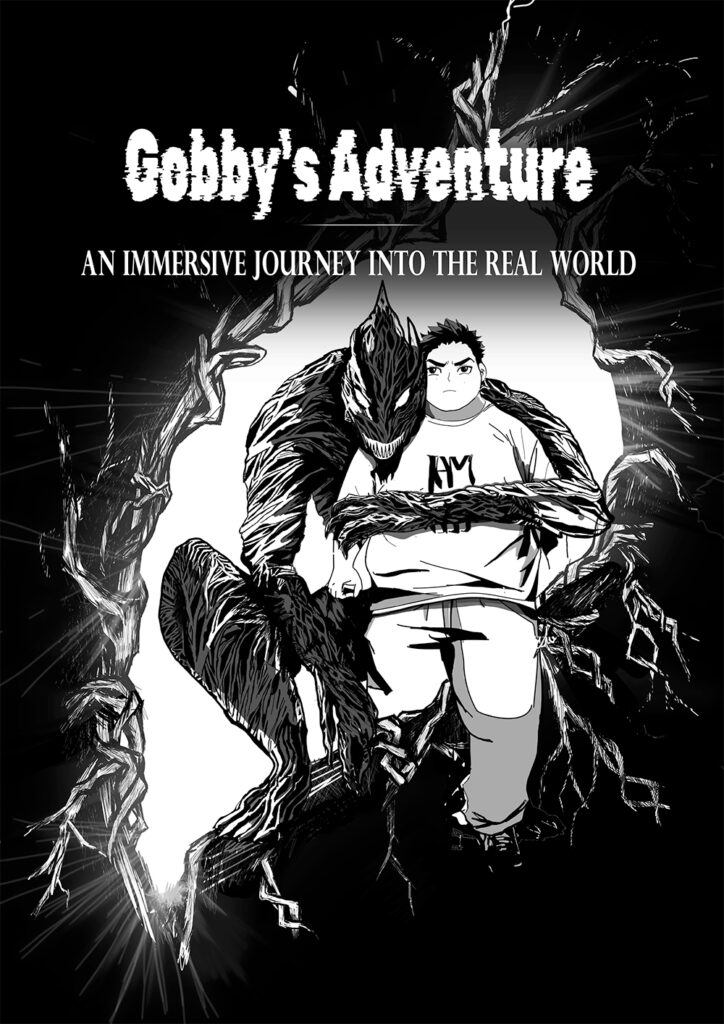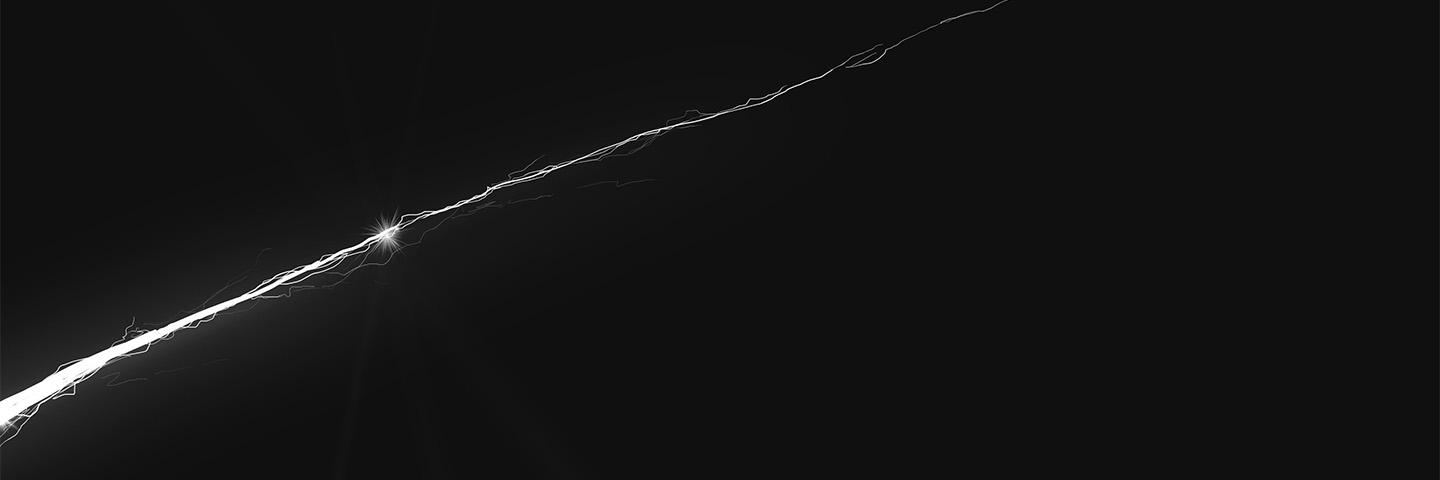Gobby’s Adventure – An Immersive Journey into the Real World
WELCOME TO “GOBBY’S ADVENTURE” – A WEB NOVEL BEYOND ILLUSION
No chosen ones. No reset buttons. No imaginary quests for glory. Only one fragile world – real, raw, and irreversible. And those who dare to see it for what it is.
Created by a Latvian author and brought to life by a close-knit creative team, Gobby’s Adventure is an illustrated psychological web novel for mature readers ready to face what lies beneath the surface.
Recommended for 18+
Contains psychological tension, graphic violence, identity distortion, philosophical themes, and dark humor.
In this story, no one saves the world.
They survive it.
They collide, fuse, fracture.
And some of them… look back from the other side of illusion.

The core paradigm
What follows is not the beginning of the story – it is the foundation beneath it.
These pages are a glimpse into the author’s way of seeing the world, a map of ideas that later formed the roots of Gobby’s Adventure.
Attention – optional reading!
You don’t need this part to follow the novel. But if you wish to understand the forces that influenced its characters and their choices, this is where they were born.
THE TRUTH ABOUT THE WORLD THEY HIDE
“You think you live your life.
You don’t.
You perform a role written for you.
And the world you see is just a set built to keep you believing”.
The world, as it is known to the majority, is a carefully constructed illusion. Most people live as marionettes – expendable, programmable, and blind to their own subordination. They are not free; they are simply maintained.
In this structure, phenomena such as creativity, development, and the illusion of freedom have been invented not to liberate, but to prolong the functioning of the system. These concepts are a sedative – a carefully calculated dose of hope, meant to keep the marionettes moving.
To sustain this hope, the world has created its own guardians: religion and science. Among them, psychology plays a special role – not to awaken the true self, but to help the marionette adapt, stabilize, and function better within its artificial framework.
Power, in its true form, does not belong to those who follow the rules of this system. It belongs to those who have broken the illusion. Those who have merged with their essence – the primal, instinctive core of the human being – become the only true players of this world.
Essence is not a metaphor. It is the inner source – the soul in religious language, the instinct in scientific terms. It is a force, an animal-like vitality that animates the outer form of a human – the cover. The purpose of this cover is singular: to carry out the will and potential of the essence, for as long as the body allows.
The body and consciousness are tools given by the cover to the essence. In exchange, the essence offers influence – the ability to claim space, to accumulate resources, and ultimately to exert power.
True power begins where the role of the marionette ends – at the moment of cooperation between the person and their inner essence.
Two signs define this power:
- The degree to which one’s talents and genius are revealed.
- The ability to resist manipulation and dependence on others.
If these signs are absent – you are still a marionette.
“This isn’t belief. This is the core paradigm of the world.
They don’t want you to know this.
They don’t want you to feel it.
But if you’ve ever sensed that something is wrong with this world – you’ve already heard the whisper.
And now, it begins”.
Because now, you’ll learn what kind of person you are – and why some are born to follow,
while others are meant to take control.
THE SYSTEM OF HUMAN TYPES
The level of cooperation between the instinctive part and the social self defines who a person becomes. The instinctive part is the domain of the essence – primal, biological, rooted in survival. The social self is the personality – formed by culture, language, and the demands of society. When one dominates, or when both collapse, identity fractures into types. Overall, there are five types of people in this world – three main and two exceptional.
Main types of people:
1. Savages – when the instinctive part takes full control.
The essence overwhelms personality, leaving no filter. Life becomes raw impulse: hunger, fear, domination, survival. These people live by reflex rather than reflection. Soldiers forged into weapons, criminals who thrive on chaos, street gangs – but also athletes in brutal disciplines where instinct erases the social mask. They burn with immediacy. Their strength is undeniable, their presence overwhelming. Yet their lives rarely belong to them. They are carried by violence, spectacle, and desire, never by conscious choice.
Identity: ruled entirely by the instinctive part, the social self silenced. Role in the world: expendable power – a raw resource redirected by others.
2. The Lost Ones – when the social part suppresses the instinctive.
The essence still lives inside, but it remains dormant. These people spend their lives chasing connection they cannot recover. They strive through ambition, education, careers, ideologies. They long for control, but in truth they remain controlled. Their energy burns outward in restlessness, anxiety, endless striving. They pursue titles, authority, or recognition as substitutes for the silent core within. Students, young professionals, dreamers – all searching for something they can neither name nor touch.
Identity: dominated by the social part, the instinctive muted. Role in the world: a subordinate force – workers, followers, the fuel for structures built by others.
3. The Higher Ones – when the instinctive and the social fuse into one.
In these rare individuals, essence and personality move in harmony. The instinctive provides raw energy, the social gives it form. Whole and sovereign, they wield not only self-mastery but also power over the processes around them. They bend systems instead of serving them. They redirect lives, found movements, bend ideologies. Their presence is quiet yet undeniable, their influence often unseen yet decisive.
Identity: integrated, sovereign, reconciled between instinctive and social. Role in the world: the true players – hidden rulers who reshape societies and histories.
Exceptional types of people:
4. The Hollow – when both parts collapse.
The instinctive and the social fail together. What remains is absence: a body that moves, a face that speaks, but no inner depth. Hollows see the world yet cannot belong to it. They imitate emotions, but cannot feel them. Some lose themselves through trauma, addiction, or brainwashing. Others through mental disorders that shatter perception itself. They drift as fragments – living ruins, present yet disconnected.
Identity: broken and fragmentary, neither instinctive nor social in function. Role in the world: background figures – reminders of collapse, incapable of change or resistance.
5. Ghosts – when identity survives outside the body.
An anomaly. The essence refuses to vanish with death. Ghosts exist in many forms: cultural myths and legends that continue to rule; psychological presences that live in memory, love, or trauma; and, in the darker layers of this world, literal entities – wandering essences that haunt the living. They are both remembrance and return. They blur the line between symbol and presence, between past and now.
Identity: disembodied essence, detached from flesh. Role in the world: haunting forces – shaping lives through memory, myth, or direct intrusion.
95% of people relate to 1st and 2nd categories and their lives are subordinate to the people of 3rd category.
What does a person, who wants to live outside this social structure and does not want to obey, have to do? There is only one answer and it sounds as follows: “TO BECOME STRONG ENOUGH TO BE ABLE TO ALLOW ONESELF TO BE FREE!”.
Is it really possible?
Synopsis
CASE FILE: GOBBY
Gobby never wanted power. He only wanted a quiet life – to eat his favorite pies, help stray animals, and stay invisible to people who called him strange. But the world doesn’t forgive those who see too much. Since childhood, Gobby has seen what hides inside people – their essences, creatures made of fear, desire, and hunger.
The doctors called it a delusion. The world called him sick.
He called it the truth.
When compassion pulls him into an act of violence, something ancient awakens inside him – powerful, silent, and not entirely human.
Across the city, a killer known as the Heart Reaver hunts those fused with their essences, devouring hearts to claim their strength.
Their paths are destined to meet – not as hero and villain, but as reflections of the same force.
As Gobby’s body begins to change, his mind fractures between instinct and reason, tenderness and rage.
To survive, he must face the oldest question:
Are you still yourself when the monster inside you starts to protect you?
Dark, psychological, and deeply human, Gobby’s Adventure explores the fear of awakening – and the quiet horror of realizing that awareness itself might be the most dangerous gift.
8 Chapters
- Chapter 1 – Super 2,663 Words
- Chapter 2 – Hello, my new friend 2,209 Words
- Chapter 3 – Sacrificial offering 1,502 Words
- Chapter 4 – Awakening 1,353 Words
- Chapter 5 – I need help 1,187 Words
- Chapter 6 – I’m losing my mind! 2,897 Words
- Chapter 7 – Escape! 1,453 Words
- Chapter 8 – Parental fear and the emergence of the illness 1,514 Words
